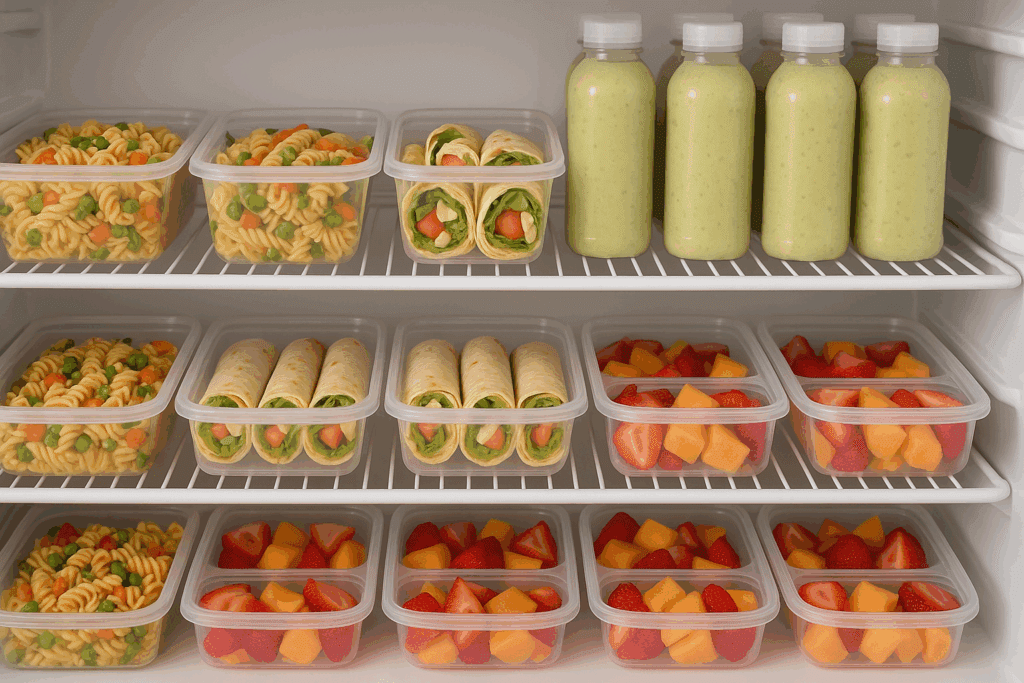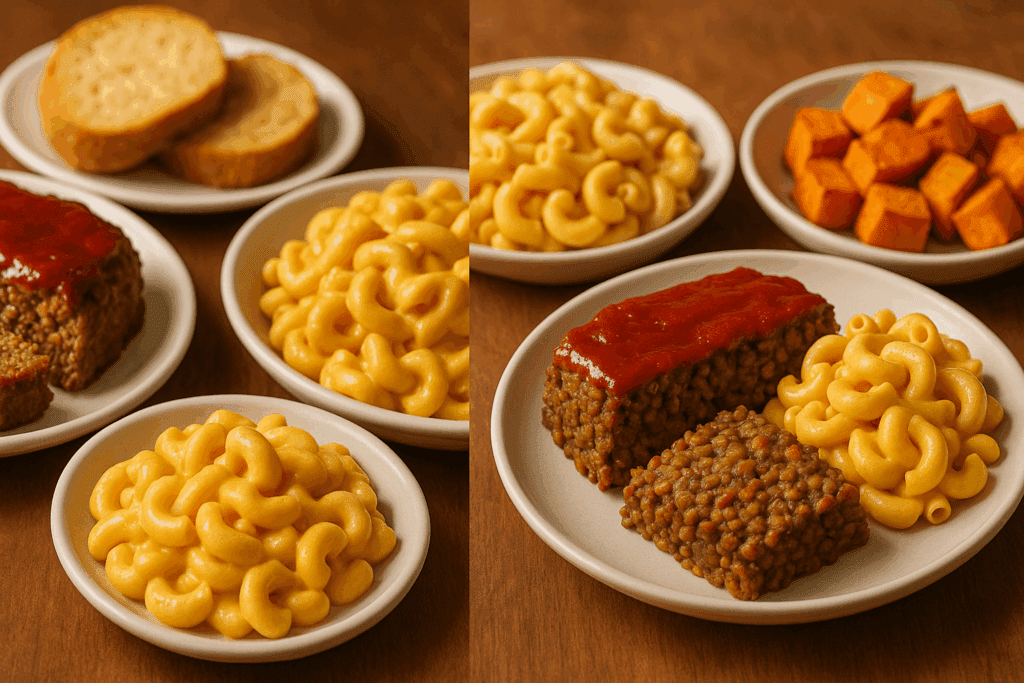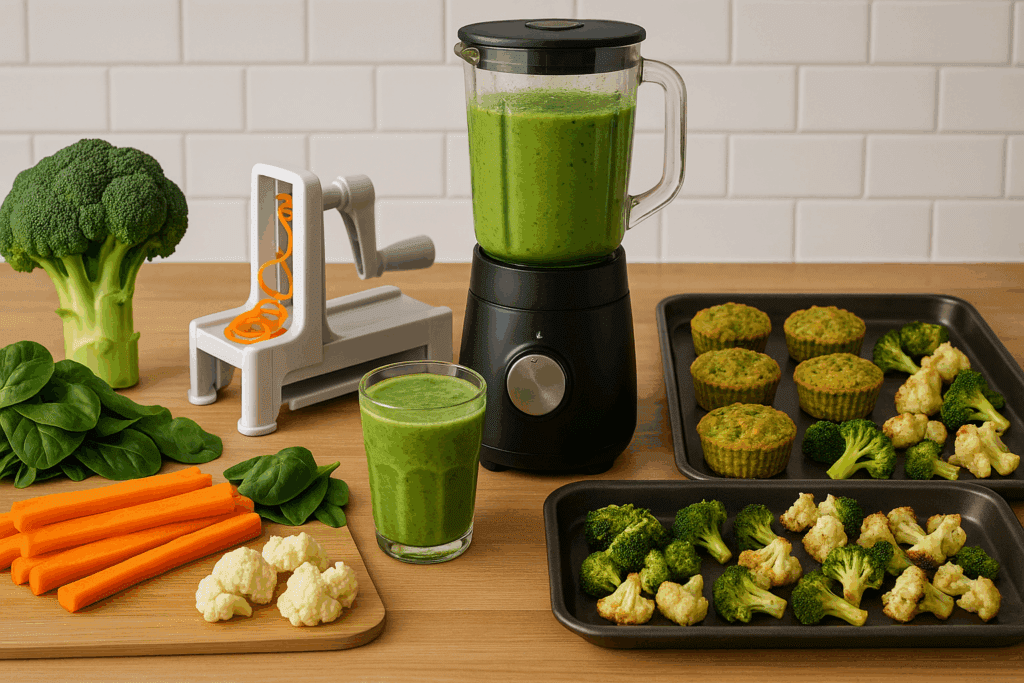Eating well should be simple, satisfying, and nourishing. But for families and individuals navigating the challenge of picky eating—especially when striving to improve health—meal prep often becomes a daunting task. Whether you’re an overwhelmed parent, a busy student, or simply someone looking to optimize your diet, learning how to structure meals for selective palates can be the difference between frustration and a flourishing, nutrient-rich lifestyle. This article explores the art and science of meal prep for picky eaters, unveiling practical strategies grounded in nutritional expertise and behavioral psychology to help even the most hesitant eaters embrace healthier habits without resistance.
You may also like: Smart Meal Prep for Weight Loss: Expert-Approved Lunch Ideas and Recipes to Stay on Track
Understanding the Roots of Picky Eating and Its Impact on Nutrition
Picky eating is more than just a phase or personality quirk—it can stem from a mix of biological, psychological, and environmental influences. Taste sensitivities, negative food experiences, sensory processing issues, and learned behaviors all contribute to selective eating patterns. For some, textures trigger aversions. For others, it’s strong flavors or an unpredictable food environment. Whatever the root cause, one common thread is the difficulty in achieving nutritional adequacy, particularly when entire food groups—like vegetables, legumes, or whole grains—are rejected.
This limitation can create long-term nutritional imbalances that affect immunity, cognitive development, and energy levels. Fortunately, structured and creative meal prep ideas for picky eaters can gradually broaden dietary variety while respecting individual boundaries. Instead of forcing compliance, a more compassionate approach that introduces foods in familiar forms and flavors often yields greater long-term acceptance. The key lies in understanding how to make healthy eating feel safe, satisfying, and stress-free.

Why Meal Prep Matters for Picky Eaters: Creating Predictability and Nutritional Security
One of the greatest benefits of meal prep for the picky eater is the sense of predictability it brings. When meals are prepared in advance, eaters know what to expect, eliminating last-minute anxieties about unfamiliar foods. This structure can reduce mealtime resistance and create a more positive relationship with eating. Moreover, pre-planning allows caretakers to subtly incorporate nutrient-dense ingredients into dishes without drawing attention to them. For example, blending cauliflower into mac and cheese or pureeing beans into a pasta sauce are clever techniques that enhance nutrition while maintaining a dish’s beloved taste and texture.
Equally important is the opportunity to make healthier versions of preferred foods. Instead of banning chicken nuggets or pizza, meal prep can support the creation of baked, whole-food alternatives that retain the essence of the original meal. Over time, this consistent exposure to healthier swaps builds trust and familiarity—cornerstones of behavioral change. This slow and steady approach is especially crucial when working toward sustainable lifestyle changes for families trying to adopt plant-forward or whole-food plant-based diets.

Building Balanced Meals: The Science Behind Smart Pairings
Effective meal prep for picky eaters isn’t about hiding vegetables or tricking the taste buds—it’s about intelligent pairing. Nutritional science emphasizes the value of combining proteins, healthy fats, complex carbohydrates, and fiber in each meal to create satiety and support blood sugar stability. This approach is especially useful when working with selective eaters who may gravitate toward simple carbs and avoid anything green.
One of the most successful strategies is introducing new ingredients in small, familiar formats. For instance, add shredded zucchini into muffins or stir chia seeds into yogurt with fruit. The key is keeping the base comforting while enhancing it with nutrient-rich additions. Studies show that repeated exposure to new foods, even if just a small taste, can increase acceptance over time. This doesn’t mean overloading every meal with superfoods—it means gradually widening the flavor and texture palette while keeping meals grounded in comfort and predictability.
Practical Meal Prep Strategies That Work for All Ages
When it comes to meal prep for picky eaters, planning is paramount. Begin by creating a shortlist of accepted foods and favorite meals. Then, identify areas where small enhancements or substitutions can increase nutritional value without compromising appeal. For example, use whole grain pasta instead of refined, or swap cream-based sauces for cashew-based versions. Keep a weekly rotation of 3–5 base meals that can be modified easily to prevent flavor fatigue while reinforcing dietary variety.
Batch cooking and portion freezing are also key. Having individual containers of trusted meals on hand minimizes decision fatigue and prevents impulsive, less healthy choices. Additionally, consider building meals using modular components—think rice, roasted vegetables, legumes, and dressings stored separately—which allow for customizable assembly based on daily preferences. This mix-and-match approach empowers picky eaters with choice while still steering them toward balanced nutrition.

Whole-Food Plant-Based Nutrition for the Picky Eater: A Gentle Transition
Transitioning to a whole-food plant-based (WFPB) lifestyle can seem intimidating for picky eaters, especially if their diet is already limited. However, the shift doesn’t have to be radical. By framing plant-based ingredients in familiar textures and formats, the transition can feel more like an exploration than a deprivation. Start with meals that mimic the sensory experience of conventional favorites—such as lentil-based sloppy joes, black bean brownies, or chickpea nuggets. These types of dishes introduce legumes, fiber, and phytonutrients without alienating the eater.
It’s also essential to focus on flavor. Nutritional yeast, garlic, herbs, and spices can dramatically improve the palatability of plant-forward meals. When it comes to encouraging broader food acceptance, flavor satisfaction plays a bigger role than often realized. Moreover, when the goal is to support a healthier lifestyle long-term, it’s vital to remember that positive associations with meals have just as much value as their nutrient content.
How the Ketogenic Diet Compares to Low-Carb Approaches for Picky Eaters
In recent years, many adults exploring dietary strategies for wellness have asked: is keto a low carb diet or is it something fundamentally different? The answer lies in the macronutrient ratios. A ketogenic diet is a strict form of low-carb eating that dramatically reduces carbohydrate intake—typically below 50 grams per day—to induce a metabolic state known as ketosis. In contrast, a low carb diet keto diet comparison reveals that low-carb plans offer more flexibility, usually allowing up to 150 grams of carbs daily.
While both dietary patterns have been associated with weight loss and blood sugar control, their compatibility with picky eating habits is another story. Is keto a good diet for someone with selective tastes? That depends. Because many keto-approved foods—such as fatty fish, nuts, eggs, and leafy greens—are often on the “no” list for picky eaters, adherence can be difficult. Moreover, the restrictive nature of keto can make it less appealing for those already wary of trying new foods.
Still, when done mindfully and with expert supervision, keto can offer benefits. The key lies in understanding whether a keto diet vs low carb diet offers the best path forward for a given individual. For picky eaters, a moderate, well-balanced low-carb approach might be more sustainable, offering flexibility and greater variety. This raises a critical question: is a keto diet sustainable for the average picky eater? Often, the answer is no—unless tailored with great care. However, integrating elements of keto—such as focusing on whole foods, reducing refined carbs, and prioritizing satiety—can still yield measurable health improvements.

Creative Culinary Techniques That Increase Acceptance Without Coercion
One of the most underutilized tools in supporting better nutrition among picky eaters is culinary creativity. Texture plays a crucial role in food acceptance. For example, a child who rejects steamed broccoli might love it if it’s oven-roasted until crispy or blended into a creamy soup. Similarly, blending vegetables into sauces, soups, and smoothies can increase vegetable intake without changing the visual presentation too drastically.
Fermentation, caramelization, and seasoning can also transform how foods are perceived. Roasted root vegetables develop natural sweetness, making them more palatable. Homemade pickles or sauerkraut can add zest and appeal to otherwise bland meals. By embracing these cooking techniques, families can elevate everyday meals into flavor-rich, nutrient-dense experiences without needing to persuade or pressure the eater.
Mindful Eating Practices to Support Long-Term Success
Building better nutrition habits for picky eaters isn’t just about food—it’s about the experience of eating. Mindful eating encourages awareness, gratitude, and sensory engagement during meals, which can reshape the emotional associations picky eaters have with food. Rather than framing meals as battles or obligations, creating a relaxed, positive mealtime atmosphere can foster openness to new experiences.
Encouraging eaters to explore food through sight, smell, and texture—before even tasting—builds curiosity without pressure. Engaging in conversations about where food comes from, involving picky eaters in the shopping and preparation process, and modeling enthusiasm around new ingredients all help to cultivate interest and trust. These small, consistent practices lay the groundwork for long-term shifts in attitude toward food, improving outcomes far beyond the plate.
Sustaining Progress: How to Keep the Momentum Going
Once improvements begin, it’s important to maintain momentum without slipping into complacency or regression. Tracking small wins—like trying one new food per week or finishing a well-balanced meal without complaints—can provide motivation and a sense of accomplishment. It’s also beneficial to regularly revisit and revise meal plans based on changing preferences, seasonal ingredients, or evolving health goals.
Including a mix of core meals (those that are always well-received) and experimental meals (which introduce new flavors or ingredients) ensures both nutritional consistency and growth. Sharing meals with others, trying restaurant-inspired versions of home meals, or exploring international cuisines can also expand food horizons in an enjoyable and enriching way. Remember, progress in picky eating is rarely linear, but every small step forward counts.

Frequently Asked Questions: Smart Meal Prep for Picky Eaters
1. How can I use meal prep to help a picky eater gradually try new foods without pressure?
Gradual exposure is key when introducing unfamiliar foods to a picky eater. Start by incorporatingvery small portions of a new food alongside their favorite meals. For instance, placing a teaspoon of roasted vegetables next to their usual rice dish can build visual familiarity over time. A strategic approach to meal prep for picky eaters involves consistency, not confrontation—offering the same unfamiliar food multiple times across different meals may eventually lead to acceptance. Use repetition without pressure, and avoid reward systems that might create negative emotional associations with food. Consistency in meal prep for the picky eater also reinforces routine, which many selective eaters find comforting.
2. What are some overlooked ingredients that work well in meal prep ideas for picky eaters?
Often, it’s the hidden heroes of nutrition that make a difference. White beans, for example, can beblended into smoothies, sauces, or even brownie batter, providing fiber and protein without altering taste or texture. Butternut squash purée can be stirred into macaroni or pancake batter for natural sweetness and nutrients. Silken tofu blends easily into dressings or soups, offering a protein boost while maintaining a creamy mouthfeel. These subtle additions make meal prep for picky eaters more nutrient-dense without triggering resistance. Exploring these lesser-known options adds variety while meeting essential dietary needs.
3. How can I keep meal prep for picky eaters from becoming monotonous?
To prevent repetition fatigue, focus on changing sauces, spices, or cooking techniques rather than thecore ingredients. Roasting versus steaming can dramatically alter flavor and texture, while rotating between creamy and tangy sauces offers fresh sensory experiences. With meal prep for the picky eater, variety doesn’t always mean a complete overhaul—small tweaks can maintain interest. For example, swapping basil pesto with roasted red pepper pesto while keeping pasta constant introduces novelty in a familiar context. Adding modular components like grains, legumes, and dips allows you to build meals with flexibility while respecting preferred textures and flavors.
4. Are there psychological strategies that can improve success with meal prep ideas for picky eaters?
Yes, the psychology behind mealtime behavior plays a critical role. Giving picky eaters a sense ofagency—such as choosing between two prepped meal options—can foster greater food acceptance. Visual cues also matter; studies show that compartmentalized plates or bento boxes increase willingness to try foods by reducing visual overwhelm. When planning meal prep for picky eaters, consider including them in the preparation process—even simple tasks like rinsing vegetables or arranging ingredients can boost engagement. Reframing food as an activity rather than a task helps reduce pressure. This approach not only supports better nutrition but also encourages positive emotional associations with mealtimes.
5. How can I make meal prep work for picky eaters with food texture sensitivities?
Texture aversion is a common issue that can derail well-intended meals. In these cases, blending orpureeing ingredients may create more tolerable consistencies. For example, smoothies made with soft fruits and yogurt can be a gateway to nutrient diversity. For solid meals, using tools like food processors to finely chop vegetables or slow-cooking proteins until they are tender can help. Another technique involves layering textures gently—adding a small amount of crunchy topping to an otherwise soft dish can introduce new sensations without overwhelming the eater. Thoughtful attention to mouthfeel is a vital element in successful meal prep for picky eaters.
6. What role do sensory cues play in effective meal prep ideas for picky eaters?
The sensory experience of food—including aroma, temperature, and color—has a major impact onacceptance. Warm, aromatic meals like stews or seasoned rice bowls can be more enticing than cold, bland dishes. Colorful vegetables like carrots, bell peppers, or purple cabbage—when presented attractively—can invite curiosity, even in hesitant eaters. With meal prep for picky eaters, arranging ingredients in neat, visually balanced portions can make meals feel safer and more approachable. Adjusting temperature also helps; for example, some picky eaters prefer room-temperature food over hot meals, especially if extreme heat alters texture or aroma. Using all five senses in meal design can increase willingness to engage with food.
7. Can meal prep for picky eaters be adapted to plant-based diets without sacrificing appeal?
Absolutely. The secret lies in replicating the sensory experience of their favorite meals using plantbased alternatives. For instance, lentil-based sloppy joes or black bean tacos mimic the structure and satisfaction of traditional dishes. Nutritional yeast adds a cheesy flavor to sauces without dairy, and umami-rich ingredients like mushrooms and tamari can add depth. Meal prep ideas for picky eaters on plant-based diets should prioritize familiar textures—such as crispy baked tofu or creamy cashew sauces—to maintain appeal. Additionally, layering flavors with herbs and spices ensures meals are vibrant rather than bland, encouraging ongoing participation in plant-forward eating.
8. How do I adapt meal prep for the picky eater who has unpredictable food preferences?
Flexibility is crucial when preferences change frequently. Creating meal components rather than fullyassembled dishes allows for daily customization. For example, prepare separate containers of roasted vegetables, grains, proteins, and sauces so the picky eater can assemble meals based on their mood or cravings. This modular style of meal prep for picky eaters reduces food waste and gives them autonomy without compromising nutrition. It also creates opportunities for taste testing in a low-pressure setting, which can support gradual exposure to new foods. Keep a rotating list of accepted ingredients to track evolving tastes and guide weekly prep more effectively.
9. What are some long-term benefits of sticking with meal prep for picky eaters?
Beyond improving nutrition, consistent meal prep can reshape eating habits for life. It builds afoundation of food predictability, reduces stress around mealtime, and fosters a greater sense of control over dietary choices. As taste buds adapt through repeated exposure, even initially rejected foods may become tolerable or even liked. Long-term adherence to meal prep for the picky eater also supports portion control and helps avoid the temptation of less nutritious convenience foods. Over time, this structure becomes second nature, empowering even the most hesitant eaters to explore new foods with confidence and curiosity.
10. What are some tools or gadgets that can enhance success with meal prep ideas for picky eaters?
Innovative kitchen tools can make all the difference. Bento boxes with small compartments helporganize meals visually and reduce overwhelm, which is especially helpful for children or adults with sensory sensitivities. Spiralizers can turn zucchini or carrots into noodle shapes, making vegetables more fun and familiar. A high-speed blender is invaluable for creating smooth textures, from soups to smoothies. Even a simple mini muffin tin can turn bite-sized meals into visually appealing options for picky eaters. Investing in a few versatile gadgets not only streamlines the process but also boosts engagement, turning meal prep for picky eaters into a creative, enjoyable ritual.

Final Thoughts: Nourishing Picky Eaters with Patience, Creativity, and Strategy
Meal prep for picky eaters doesn’t have to feel like an uphill battle. With a mix of compassionate understanding, evidence-based strategies, and culinary innovation, it’s entirely possible to create meals that both nourish the body and delight the palate. Whether you’re navigating the nuances of meal prep ideas for picky eaters or weighing the pros and cons of the keto diet vs low carb diet, the ultimate goal remains the same: sustainable, satisfying nourishment.
So, is keto a low carb diet? Yes—but it’s also more restrictive and less forgiving than its flexible counterpart. Is keto no carbs? Not quite, but it’s close. For most picky eaters, the better question may be: is keto a good diet for me, or is a modified, lower-carb approach a more realistic path? By centering food decisions on enjoyment, balance, and trust, the journey toward improved health becomes less about control and more about connection. With time, patience, and a few smart meal prep strategies, even the pickiest eater can find pleasure in a plate full of color, texture, and life.

